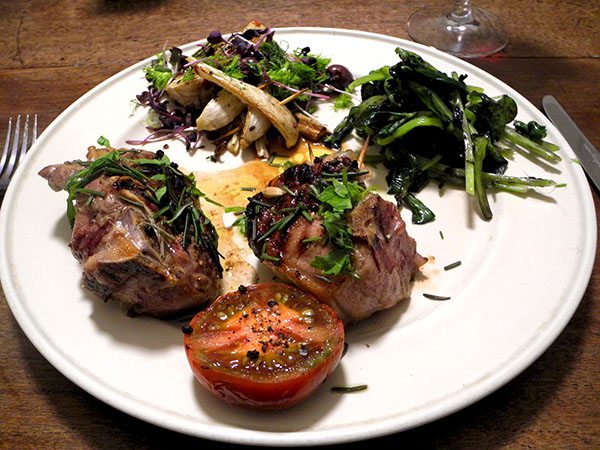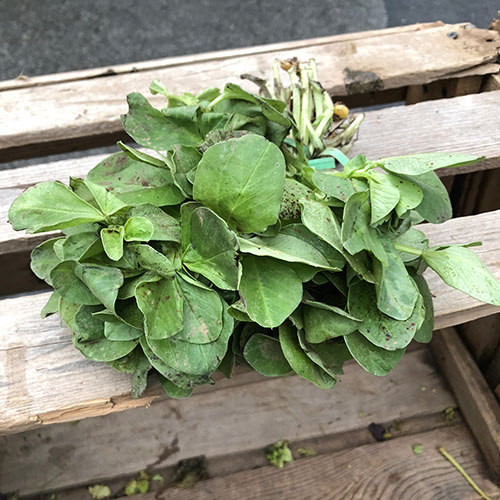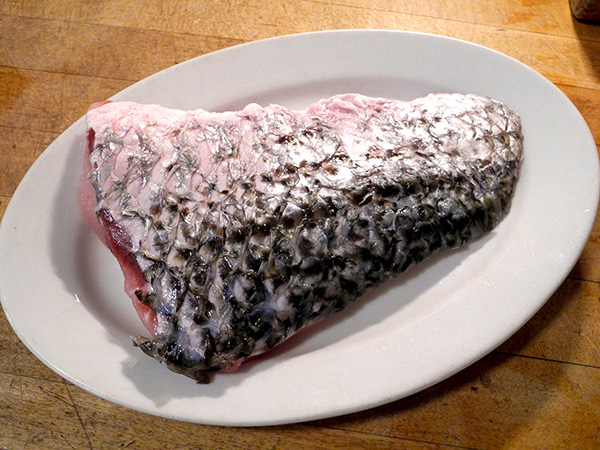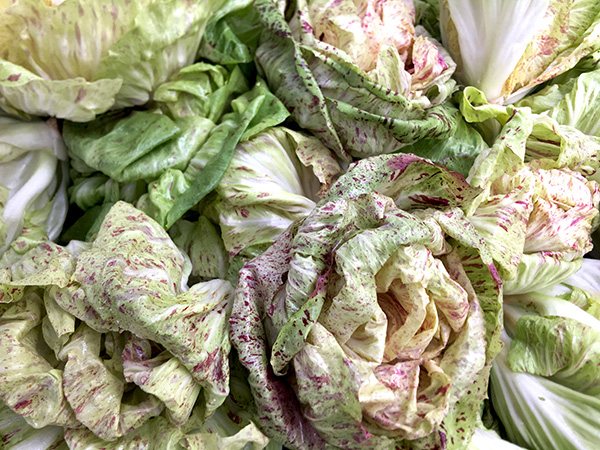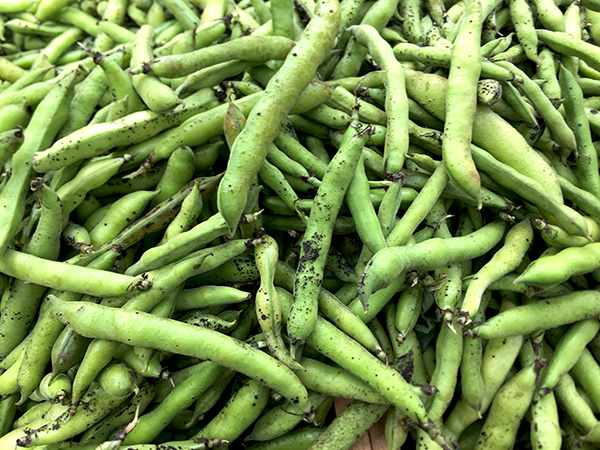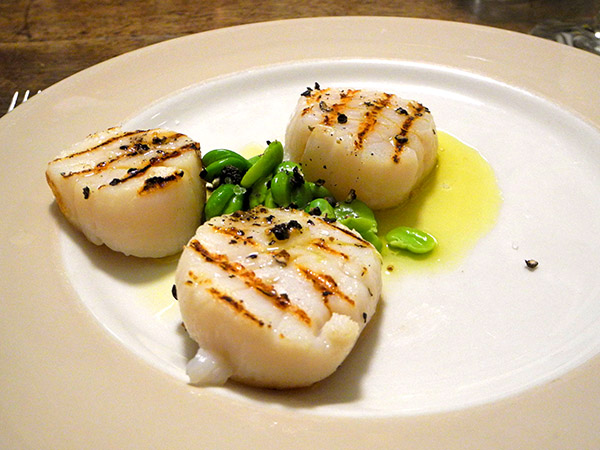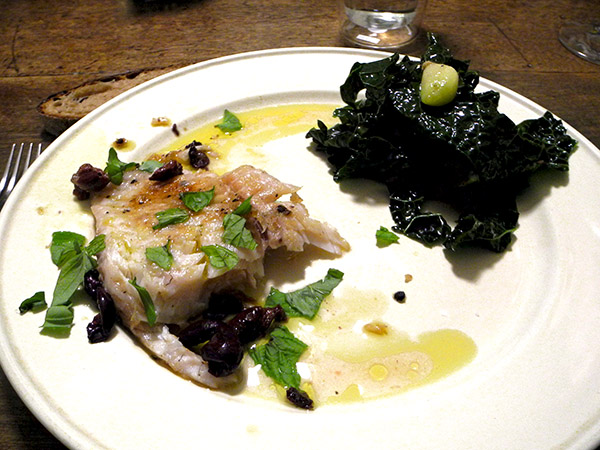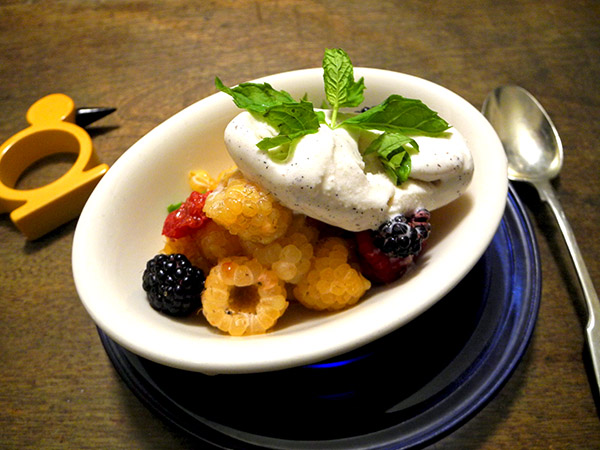
Tuesday was the official first day of spring, but until these greens appeared in the Union Square Greenmarket on Friday, I wasn’t quite feeling it.
We really celebrated the equinox yesterday, after an antepasto which only looked springy.
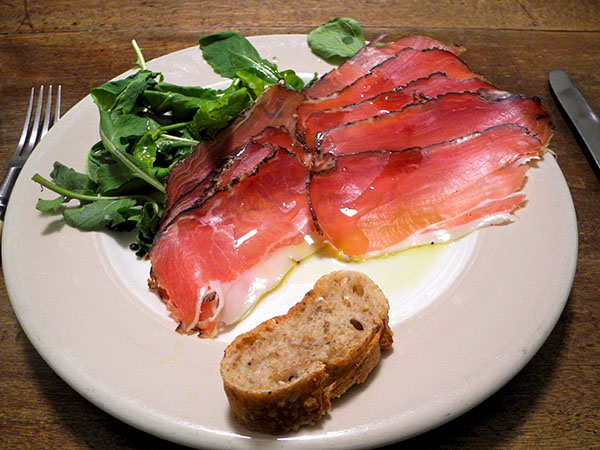
While the Speck, a dry-cured, lightly smoked ham, isn’t specific to any season, the pasta it introduced was, as it came garlanded with fava greens.
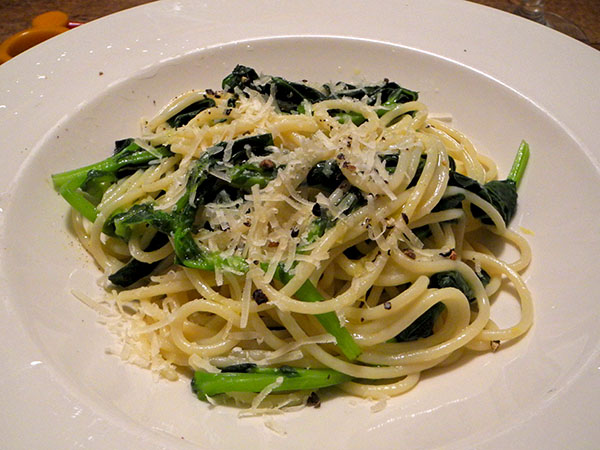
The first course almost came as a kit.
- four ounces of Citerio Fresco prosciutto from Whole Foods Market, drizzled some Frankies 457 Sicilian olive oil, the gift of a friend, arranged at the edge of a spray of baby arugula from Windfall Farms, dressed with the same oil, Maldon salt, and freshly-ground black pepper
- slices of an organic multigrain baguette from Bread Alone
The pasta was assembled almost as easily.
- a few loose handfuls of fava greens from Campo Rosso Farm, washed, drained, and gradually added to a pot more than large enough to hold half a pound of cooked pasta (I used a large enameled cast iron pot in this instance) in which a 3 cloves of Keith’s Farm Rocambole garlic had already been heated and softened a bit, the greens stirred and allowed to wilt only slightly before stirring in some lemon zest and maybe a little lemon juice, then 8 ounces of cooked and drained Afeltra 100% grano italiano spaghetti, produced in Gragnano, from Eataly Flatiron, added and stirred over medium-high heat with some of the reserved pasta cooking water, arranged inside low bowls and finished with some olive oil, grated Parmigiano Reggiano Hombre from Whole Foods Market, and freshly-ground pepper to taste.
- the wine was an Italian (Campania) white, Fiano di Avellino, Ciro Picariello 2015, from Astor Wines
- the music was Dvořák’s Symphony No. 9, ‘From the New World’, Andris Nelsons conducting the Bavarian Radio Symphony Orchestra
